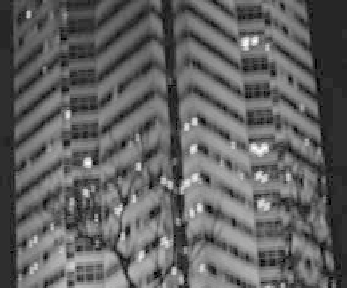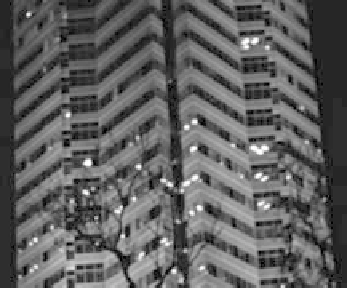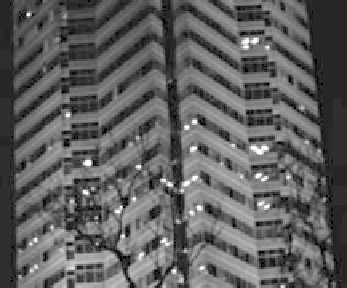Information Technology Reference
In-Depth Information
(a)
(b)
(c)
(d)
Fig. 4
Frame doubling of the 284
×
236 sequence
Building
.
a
original frame 1. New frame
2by
b
frame averaging,
c
variational TSR without GCA, and
d
variational TSR with GCA.
the original frames, but this is not noticeable in the videos (which in some sense
supports the results in [5] on alternating between sharp and blurred frames without
loss of overall perceived sharpness).
The sequence
Control Panel
is taken from the same movie as
Building
and has a fast camera pan and complex motion (the person walking behind the con-
trol panel and being tracked by the camera pan). Results are given in Fig. 5 and
as videos in [32]. As with
Building
the frame averaging result still has jerky
motion and flickering and the new frames are also blurry, while TSR w/o GCA pro-
duce only slightly blurred frames and have overall natural motion. When looking
at single frames as stills, it becomes clear that the complexity of the motion with
many and fast (dis)occlusion is too much for our variational optic flow scheme in
its current version (both with and without GCA). As with the boundary problems
in
Cameraman Pan
the problems might be spotted during video playback if the
attention of the viewer happens to get focussed on just that region. Whether that will
happen in a very dynamic scene like
Control Panel
is hard to say. We discuss




